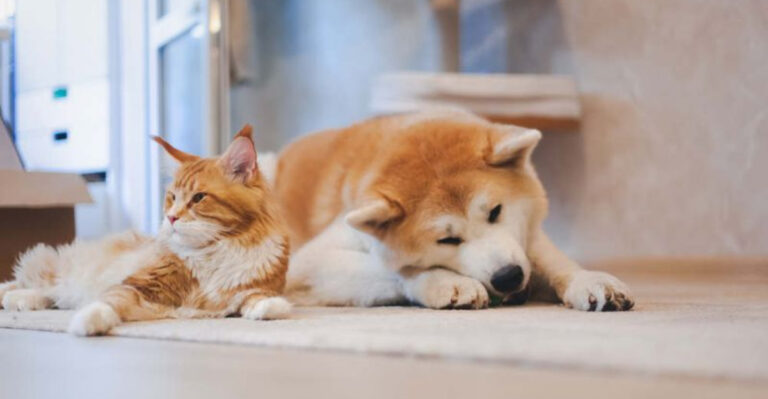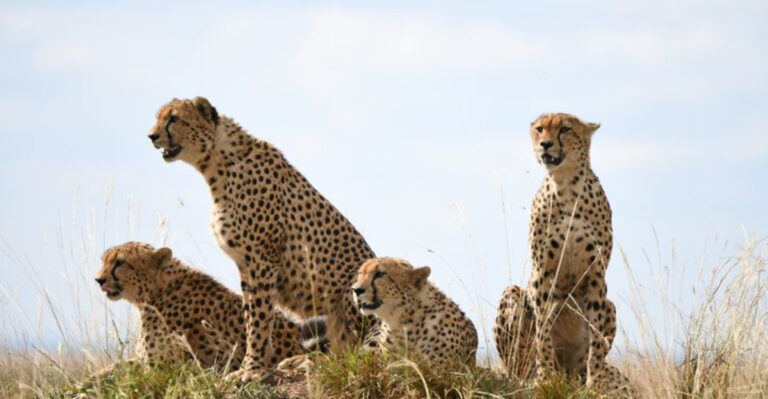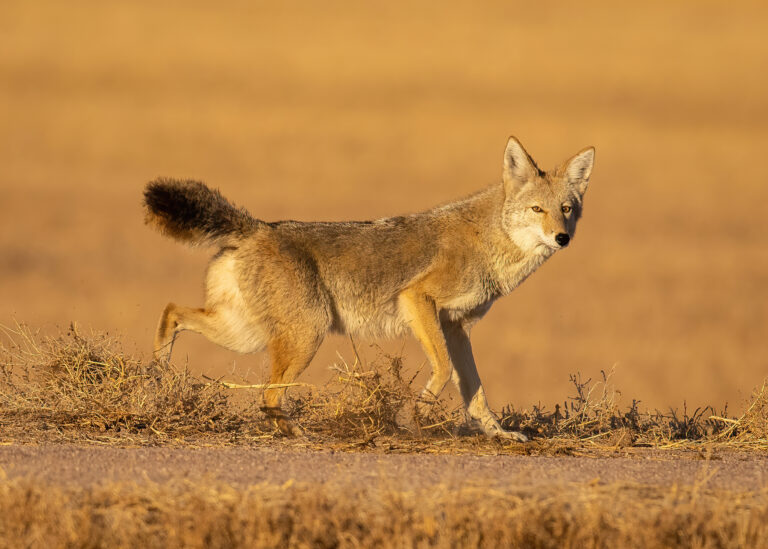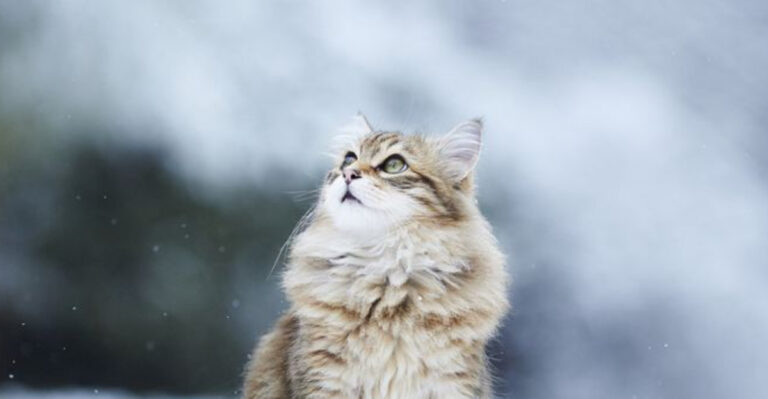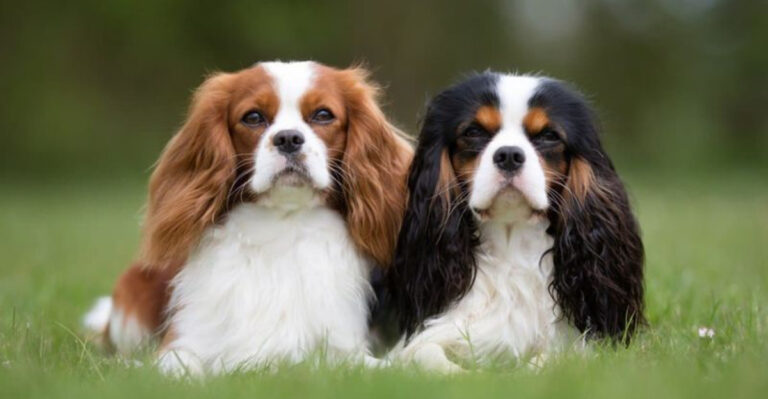The Birds That Change Color With Age

Birds are some of nature’s most colorful creatures, but did you know some species actually change their feather colors as they mature?
These transformations can be so dramatic that juvenile birds look completely different from their parents.
From subtle shifts to stunning makeovers, these feathered transformations showcase nature’s incredible diversity and adaptability.
1. Dramatic Makeover Artists: American Flamingos
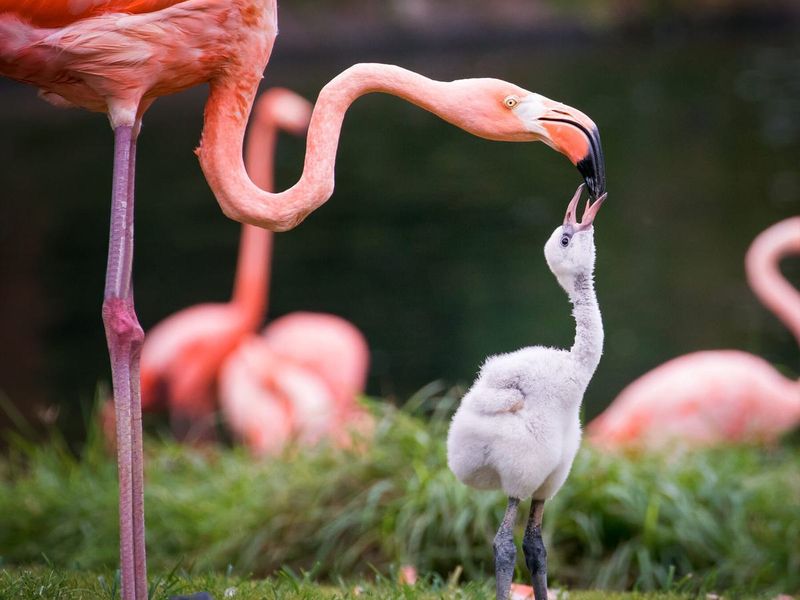
Born with grayish-white feathers, these future pink icons undergo a complete color revolution. Their famous rosy hue doesn’t happen overnight – it develops gradually as they consume algae rich in carotenoid pigments.
Young flamingos look so different from adults that early naturalists thought they were different species altogether!
2. Ocean’s Color-Shifters: Atlantic Puffins
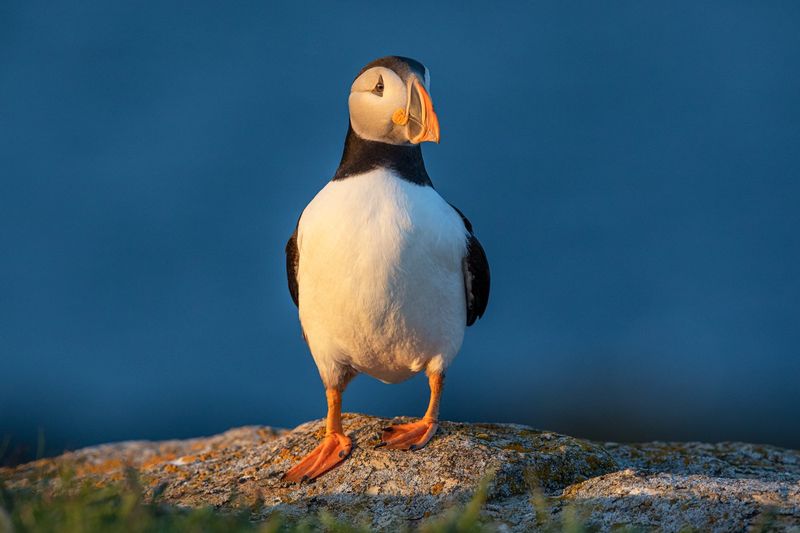
Winter brings a dramatic wardrobe change for these beloved seabirds. Their iconic colorful beaks fade from bright orange to a dull gray, and their distinctive facial patterns disappear almost entirely.
Many bird watchers are shocked to learn they might have seen winter puffins without even recognizing them!
3. Feathered Chameleons: Bald Eagles
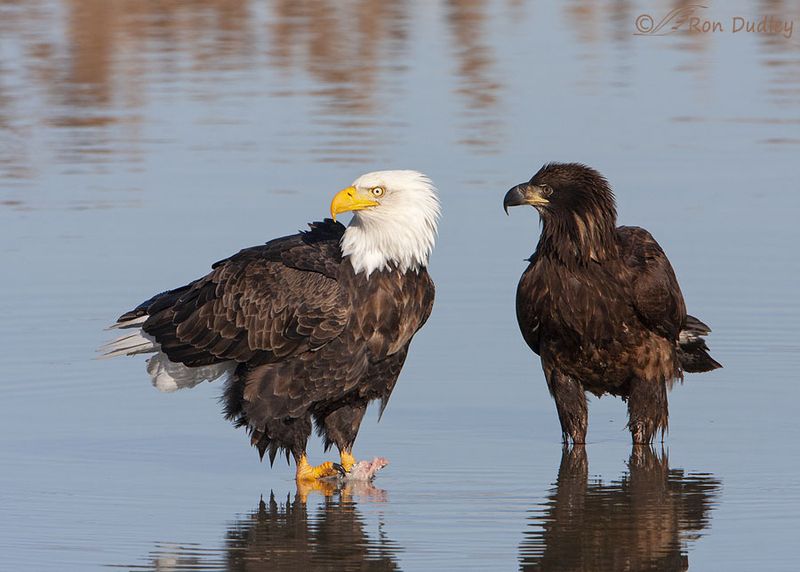
Youngsters sport mottled brown plumage with white patches, looking nothing like their famous parents. The transformation to that iconic white head and dark body takes nearly five years of gradual changes.
Their eyes also shift from dark brown to yellow, completing their presidential appearance.
4. Ruby-Throated Surprises: Hummingbirds

Young males lack the dazzling ruby throat patch that gives this species its name. The brilliant red feathers develop during their first year, creating a metallic flash that appears and disappears with the light.
Until then, they’re often mistaken for females, causing confusion among backyard bird enthusiasts.
5. Arctic Fashion Icons: Snow Geese
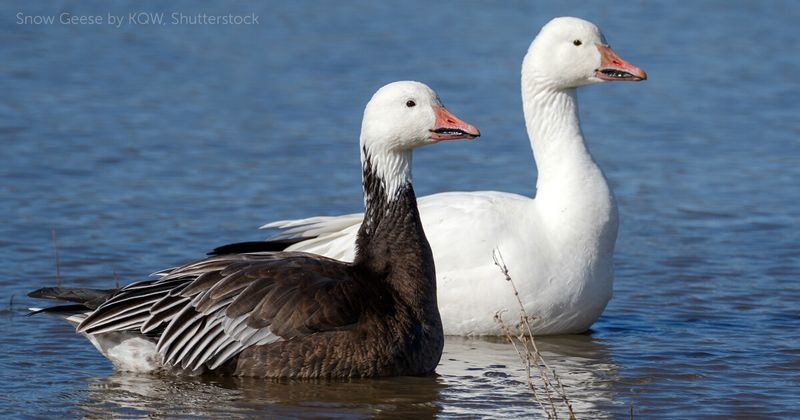
Talk about a glow-up! These northern beauties start life as smoky gray goslings before transforming into pristine white adults with striking black wingtips.
Some populations have a special twist – they come in two color forms: the white “snow” phase and a darker “blue” phase, both starting from similar gray youngsters.
6. Nature’s Painted Masterpieces: Wood Ducks

Juvenile males look like drab, grayish versions of their mothers – nothing like their fathers’ rainbow plumage. The transformation happens gradually, with patches of iridescent green, purple, and chestnut emerging like an artist adding colors to a canvas.
By their first breeding season, they’re among North America’s most colorful birds.
7. Sky-Blue Transformers: Eastern Bluebirds

Spotted, speckled youngsters bear little resemblance to their vibrant parents. Young males show patchy blue feathers mixed with brown, gradually developing their azure wings and rusty breast.
Females undergo a subtler change, developing softer blue wings and more muted colors that still clearly identify them as bluebirds.
8. Seagull Surprise Packages: Herring Gulls
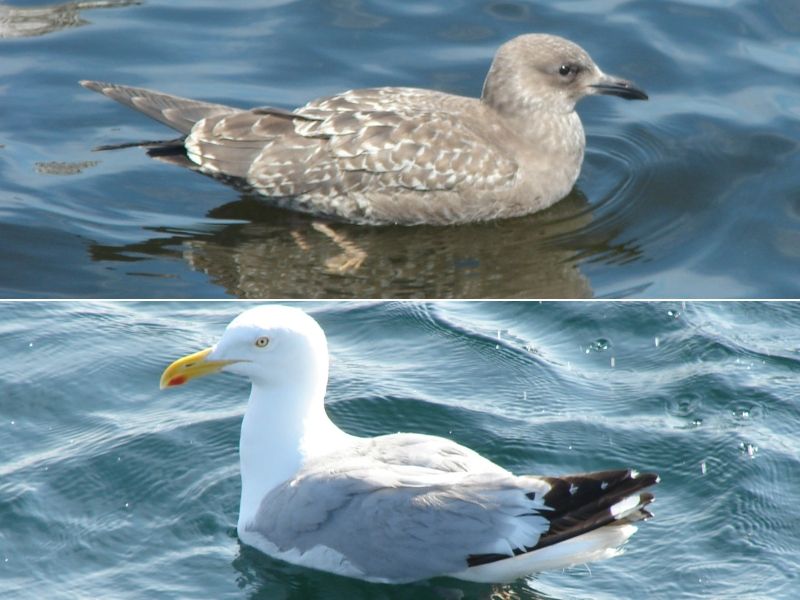
From mottled brown juveniles to clean white-and-gray adults, these common coastal birds take four years to reach their final appearance.
Each year brings a new plumage pattern, like opening a different gift each birthday. Bird experts can age gulls precisely by their unique yearly color patterns.
9. Golden Age Transformers: Goldfinches
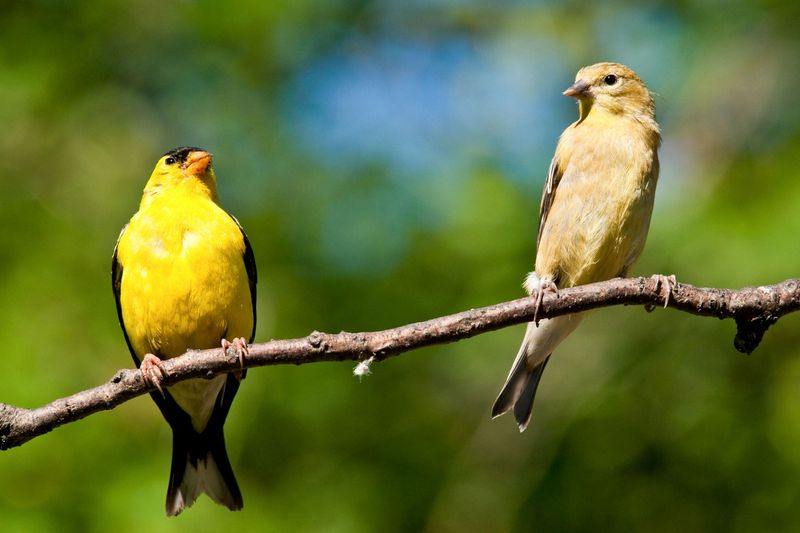
Winter brings a complete wardrobe change for these backyard favorites. The brilliant yellow males molt into a subdued olive-brown, making them nearly unrecognizable until spring returns.
Young goldfinches follow a similar pattern but must wait until their first spring to develop their first adult colors.
10. Blue Jay Imposters: Stellar’s Jays

Fledglings emerge with sooty gray heads instead of the deep blue-black crest adults sport. Their transformation happens gradually, with blue feathers replacing gray ones until the metamorphosis is complete.
The contrast between dark head and blue body becomes more pronounced with age, making older birds particularly striking.
11. Red-Headed Revelations: Sandhill Cranes
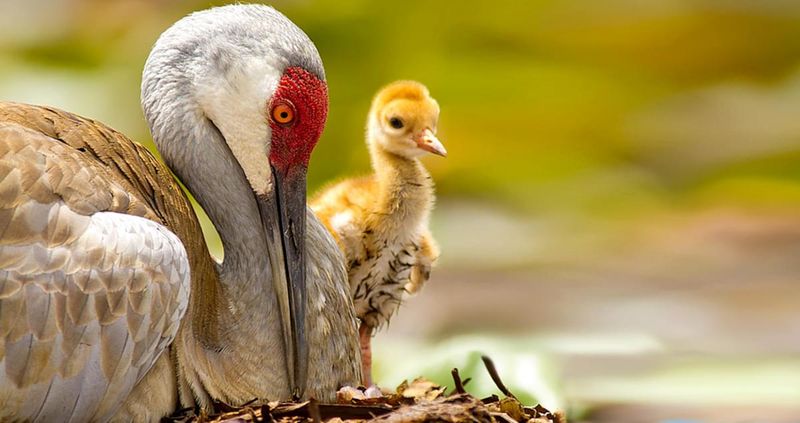
Born with cinnamon-colored downy feathers, young cranes lack their parents’ distinctive red crown patch.
As they mature, their plumage shifts to slate gray while the bare skin on their heads develops the bright crimson cap. This transformation takes about two years – a slow-motion makeover for these elegant birds.
12. Scarlet Surprises: Northern Cardinals
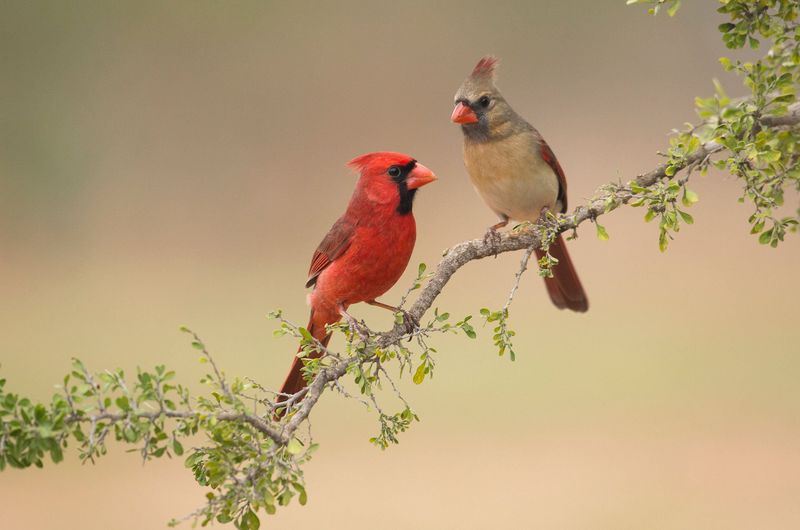
Young male cardinals start life looking almost identical to their mothers – soft brown with hints of red in wings and tail.
Their transformation to brilliant scarlet happens gradually during their first year. Even their beaks change, shifting from dark gray to the bright orange-red that completes their iconic look.

